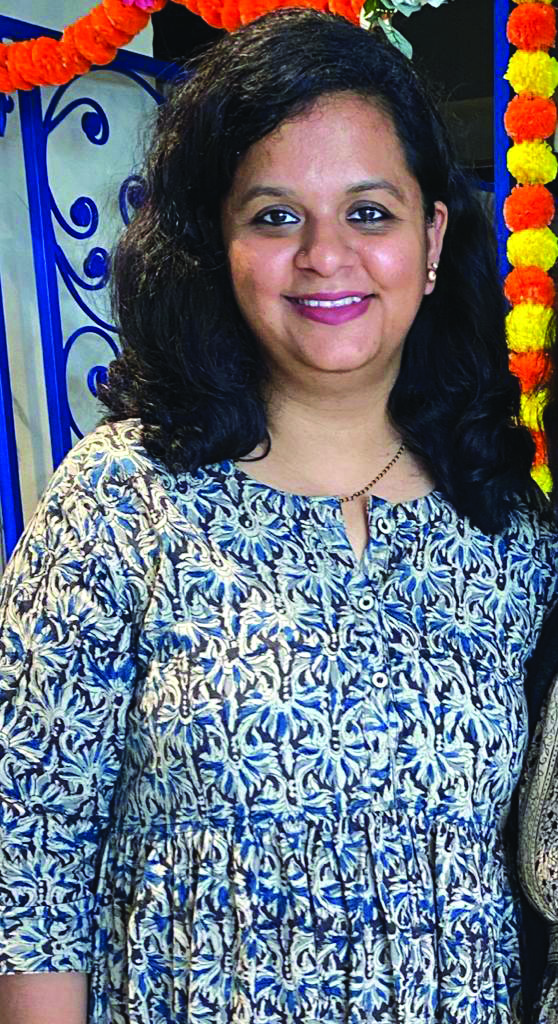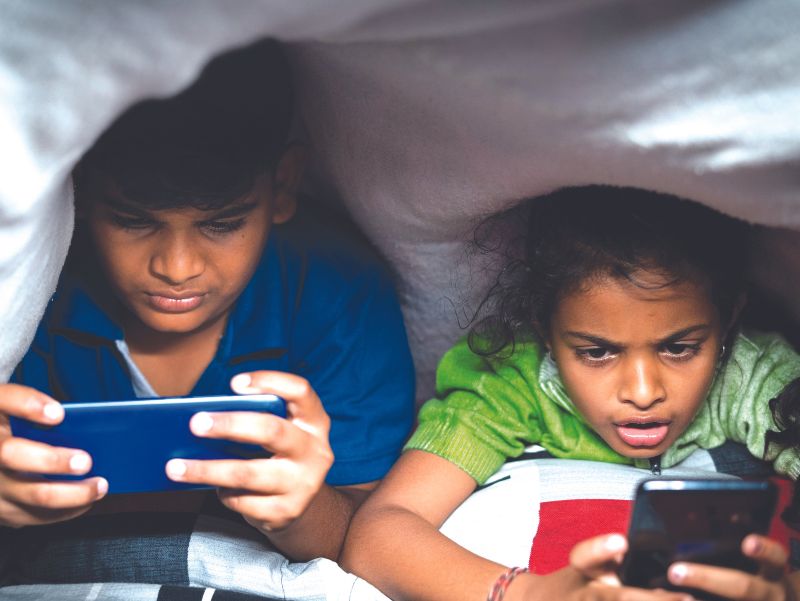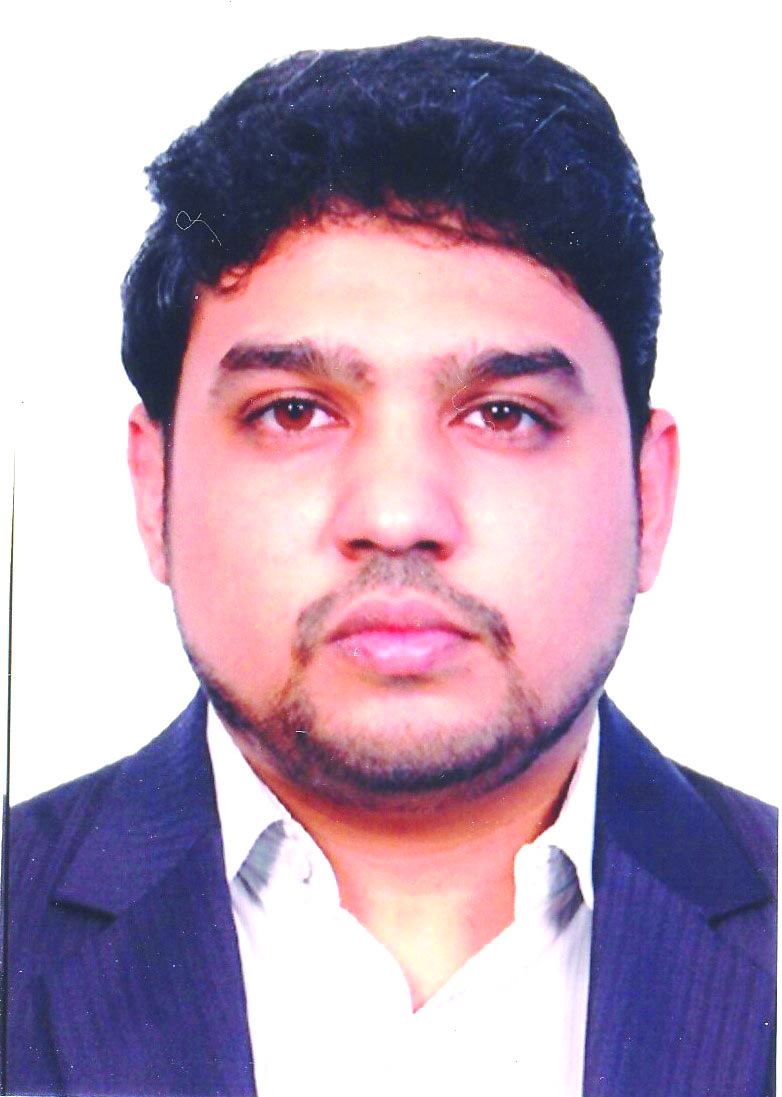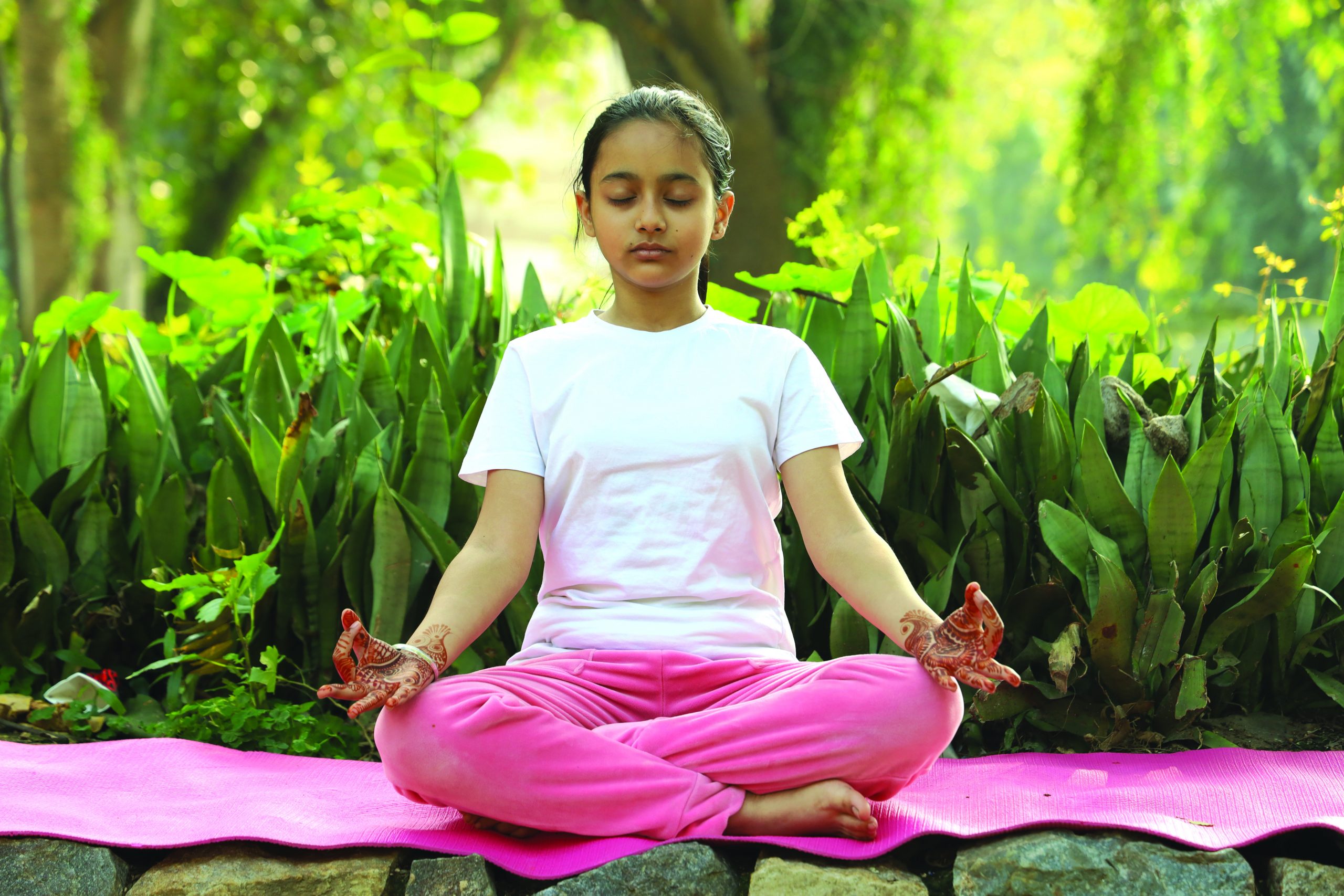With World Sleep Day coming up on March 17, we highlight the importance of children getting sufficient, good quality sleep; common sleep disorders and ways and means to improve children’s nocturnal rest and rejuvenation writes Ramiya Sakthivel, Mini P. & Cynthia John
“Sleep, the main course in life’s feast, and the most nourishing” — William Shakespeare, Macbeth
In the new era of disruptive technologies with futuristic digital gadgets offering a mind-boggling range of entertainment options, social media, games and apps, combined with fast-pace lifestyles, sleep deprivation is emerging as a major health hazard.
Driven by technology obsession and FOMO (fear of missing out), parents and children are pushing themselves to juggle packed daily schedules with entertainment options, with the result that sleep disorder has become a new 21st century lifestyle epidemic. In particular, sleep deprivation among children and adolescents is attracting incremental attention. Parents, teachers, counsellors and health experts are reporting a sharp rise in cases of sleep deprivation among children resulting in sliding exam scores, health and behavioural maladies.
According to a 2020 study of the paediatric outpatient department of the Sri Ramachandra Institute of Higher Education and Research, Chennai, 34 percent of 450 sample respondent children surveyed, reported sleep disturbance and 10.7 percent had difficulty waking up in mornings. Another more recent study (2022) published in the Indian Journal of Sleep Medicine says that an alarming 88 percent of children aged 5-15 years assessed, had sleep disorders such as parasomnia and day-time drowsiness. Sleep science experts warn parents against assuming that sleep problems in childhood will melt away as children transition into adulthood. A study published in the journal Paediatrics (February 2022) found that teenagers with insomnia are five and a half times more likely to experience it in adulthood.
“Restful, sufficient sleep is essential for children’s orderly growth and development. Growth hormones are secreted during deep sleep when the body heals and refreshes heart and blood vessels and critical brain development occurs. When children don’t get adequate sleep at night, there’s an increase in blood glucose and cortisol levels which can prompt diabetes, obesity and heart ailments. So when children sleep adequately, they are at a lesser risk of becoming overweight and diabetic. They also experience fewer learning difficulties and attention/concentration issues as children tend to better retain lessons and learning when they sleep well,” says Dr. Ranjini Raghavan, head of the ENT department at Sunrise Hospital, Kochi and a leading sleep surgeon who has conducted the maximum number of ‘sleep surgeries’ in Kerala state.
With World Sleep Day coming up on March 17, in the pages following we highlight the importance of children getting sufficient, good quality sleep; common sleep disorders and ways and means to improve children’s nocturnal rest and rejuvenation.

Dr Ranjini Raghavan
Common sleep disorders
Insomnia, sleep apnea, restless leg syndrome, microsleep, and sleep-talking are among the ailments that people, including children, experience.
Insomnia. This common sleep disorder makes it difficult for individuals to fall asleep, and remain in slumber for adequate duration. This debilitating condition is prompted by stress and anxiety, poor sleep environment, uncomfortable bed, noise, heat, cold, and lifestyle factors such as jet lag, alcoholism, excessive caffeine intake and prolonged exposure to digital screens.
With rising technology addiction in societies worldwide, children — especially teens — are spending incrementally longer hours online, especially on social media. Hyper mental stimulation is a major cause of sleep disorder, especially insomnia.
Obstructive sleep apnea. This is a breathing problem that disturbs sleep. Loud snoring is an apnea symptom. It’s a sleep disorder that also causes day-time drowsiness. “Obstructive sleep apnea is a common affliction of the young generation. Many youth in their early 20s become obese, heavy snorers because of this disorder,” says Shabeer Mohamed, director, Entrusted Medical Devices Pvt. Ltd, a Chennai-based company that specialises in ‘sleep science’, and provides hospitals and clients diagnostic sleep tests and treatment.
Microsleep. Because of inadequate sleep, afflicted individuals run the risk of microsleep — short periods of blanking out that last from a few to several seconds. Such involuntary sleep can be a life hazard when cycling, driving, crossing roads, playing, or other times when children need to be alert.
Narcolepsy. Excessive drowsiness that prompts instant sleep and is sometimes accompanied by sudden muscle weakness.

Restless Leg Syndrome. Sleep deprivation often prompts involuntary twitching of limbs, especially legs. Patients experience long delay in falling asleep.
Sleep talking. Stress or unresolved problems prompt talk during sleep.
Irregular sleep habits. To get a good night’s rest, it’s important to develop the habit of going to sleep at the same time every day — weekends, holidays and exam days included — from young age. Children who sleep irregularly and inconsistently are likely to experience stress, anxiety, concentration problems likely to persist into adulthood.
“A rising number of school children are struggling to concentrate because of sleep deprivation. In many middle class households, children are on mobile phones late into nights. Subsequently, they sleep excessively — or try to — on weekends. Sleep deprivation is becoming a serious problem among children, and parents need to pay urgent attention to addressing this issue to safeguard the health and well-being of children,” says Naina Nambiar, elementary educator, Pep School, Bengaluru.
Diagnosing sleep disorders
Health and wellness experts advise parents to pay attention to children’s sleep habits and consult the family doctor and/or specialist sleep disorder professionals when children display signs of any sleep disorder enumerated above. Increasingly, diagnostic centres are providing sleep test reports including A Home Sleep Test — a non-invasive process in which a device is used to evaluate quality of sleep. For instance, Apollo HomeCare offers an overnight examination using The Alice NightOne, an at-home testing device. Other hospitals/clinics offer similar services priced at Rs.2,000-6,000.

“There’s rising awareness within urban middle class homes about the necessity of diagnosing and treating sleep disorders. We test 80 patients per week. It’s advisable for parents to address children’s sleep disorders seriously. Neglecting this issue not only affects their school performance but also can lead to diabetes, obesity and reduced body immunity over time,” warns Shabeer Mohamed, director of Entrusted Medical Devices which provides Sleep Test Type 3 OSA screening to identify sleep apnea, and Sleep Test Type 2 polysomnography for apnea, hypopnea index, snoring, and oxygen desaturation.
 Simultaneously with rising awareness of the health and well-being, and higher workplace productivity benefits of restorative and rejuvenating sleep, a huge $256 million (Rs.2,113 crore) sleep mattresses industry has mushroomed in India. Among the market leaders of this industry recording an annual CAGR of 11 percent are Wakefit, Sleepwell, Kurlon, SleepyCat, who market gel, foam, coir and rubber-coir mattresses in the Rs.5,000-50,000 price range.
Simultaneously with rising awareness of the health and well-being, and higher workplace productivity benefits of restorative and rejuvenating sleep, a huge $256 million (Rs.2,113 crore) sleep mattresses industry has mushroomed in India. Among the market leaders of this industry recording an annual CAGR of 11 percent are Wakefit, Sleepwell, Kurlon, SleepyCat, who market gel, foam, coir and rubber-coir mattresses in the Rs.5,000-50,000 price range.
Improving sleep quality
PW interviewed several medical practitioners and sleep therapy professionals on ways and means to improve family — especially children’s — sleep.
Mattress. “Choosing a specialised mattress for conditions such as chronic back pain and particular sleep disorders is of critical importance. For instance, a mattress that’s too firm doesn’t allow the body to relax and will pressure your back. On the other hand, if mattress is too soft, your body won’t get enough support. So select a mattress that is moderately firm. Also choose the right pillow which allows you to maintain a neutral position, not too forward or overly extended. Selecting the right mattress and pillow prevents arthritis of the neck and back,” advises Dr. Shalini Joshi senior consultant, internal medicine, Fortis Hospital, Bengaluru.
Sleep position. Sleep research studies indicate 50 percent of people sleep on their left or right sides and one-third on their backs. However, left side sleeping provides greater health benefits. Moreover, the foetal position — on the side with legs curled up — is also common. For people suffering sleep apnea and chronic lower back pain, sides sleeping is more beneficial than lying on the back.

Dr Shalini
People in the habit of sleeping on their stomach, could wake up with face creases. “People who snore experience relief if they sleep on their side. Moreover, please note reflux and heartburn conditions are likely to be aggravated if you sleep immediately after dinner and on the right side,” says Dr. Joshi.
Ban all digital gadgets 30 minutes prior to bedtime. Latter day research indicates that blue light emitted by cell phones, computers, tablets, and television sets reduces natural production of melatonin, the hormone that controls the sleep/wake cycle or circadian rhythm. Low bodily melatonin levels reduce and/or disturb asleep. Therefore, it’s advisable that children put away digital gadgets 30 minutes before bed-time. Even better, make children’s bedrooms a technology-free zone by expelling television sets and all electronic devices.
Introduce bedtime routine and rituals. Ensure your child sleeps and wakes up at the same time during school term and holidays. Children mentally associate predictable bedtime rituals with restfulness. Get her to put her toys away, have a warm bath and brush teeth, put on pajamas and settle down to hear a bedtime story. A set routine signals the mind and body that it’s time to wind down.
Provide a conducive sleep environment. Make your child’s sleep area dark, cool and comfortable. If she is afraid of the dark, leave on a low-voltage light. Give her a heavy blanket as the extra pressure will relax her and induce a feeling of calm. Also discourage activities such as playing and studying in bed.
Sleep aid devices. Some sleep aid devices create white noise to improve sleep quality. Others provide soft light that gradually winds down. There are also a number of mobile apps that emit soothing lullabies and white noise. Moreover, CPAP (continuous positive airway pressure) machines are available to assist sleep apnea disorder.
How much sleep do you need?

The US-based Sleep Foundation, which does intensive research on sleep science, disorders and treatment, recommends the following sleep duration per 24-hour day for different age groups.

World Sleep Day
World Sleep Day is annually celebrated on March 17. Hosted by the US-based World Sleep Society (WSS), it’s a global awareness event. On the day sleep experts and community health professionals in over 70 member countries will organise local, regional, and national activities to promote sleep health. The theme for World Sleep Day is ‘Sleep is essential for health’. “Just like eating well and exercising, sleep is foundational to one’s physical, mental, and social well-being. However, sleep is not commonly considered essential for good health as yet. World Sleep Day is an opportunity for thousands of sleep and health professionals to promote sleep health,” says a WSS spokesperson.
Insomnia treatment: Cognitive Behavioural Therapy
Insomnia aka sleeplessness, is the most common sleep disorder that prevents essential deep sleep. Root causes include stress and anxiety, poor sleep environment (uncomfortable bed, noisy bedroom) and lifestyle factors such as jet lag, moderate alcohol and/or caffeine intake. Specialists strongly recommend Cognitive Behavioural Therapy for Insomnia (CBT-I). “Since insomnia is often mind-related, CBT-I helps change mindsets and sleep habits. Also since sleeping pills are habit forming, CBT-I is a good option to treat insomnia,” says Shabeer Mohamed, director of Entrusted Medical Devices Pvt. Ltd, a Chennai-based firm which specialises in ‘sleep science’, and supplies hospitals and clients diagnostic and therapeutic equipment.
 The defining characteristics of CBT-I are:
The defining characteristics of CBT-I are:
Cognitive therapy. Its prime objective is to identify, challenge and eradicate dysfunctional beliefs and attitudes that provoke insomnia. Some common misconceptions are unrealistic sleep expectations, fear of sleep deprivation, and overestimation of adverse consequences of poor sleep.
Stimulus control. External stimuli such as loud television noise, bright lights, digital devices, etc prevent good quality sleep. Therefore, controlling/eliminating adverse external stimuli is advisable.
Sleep habits. Develop and follow good sleep habits such as avoiding caffeine (colas, coffee, tea), maintaining a regular sleep-waking schedule, and winding down towards the end of the day with relaxing activities.
Relaxation. Meditation, positive imagery, and breathing exercises are recommended to relax the mind before bedtime.
Sleep restriction. People with insomnia often spend too much time lying awake in bed. Reduce waking time in bed to re-establish a consistent sleep schedule.

























